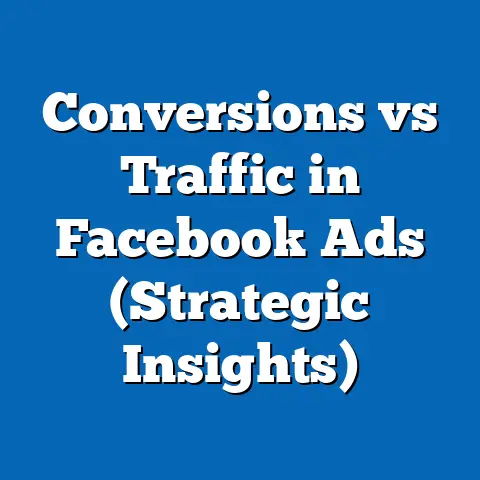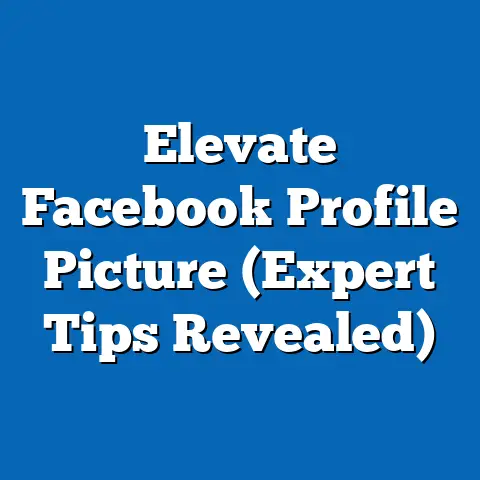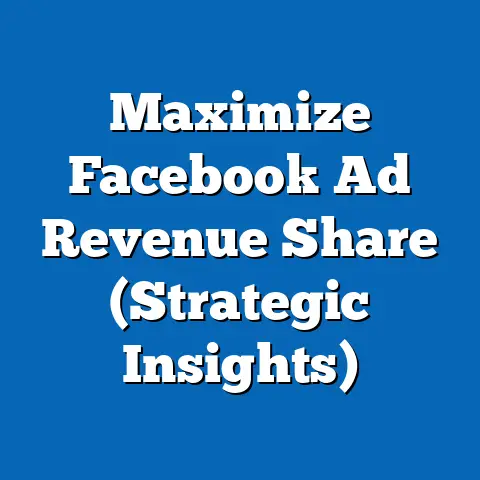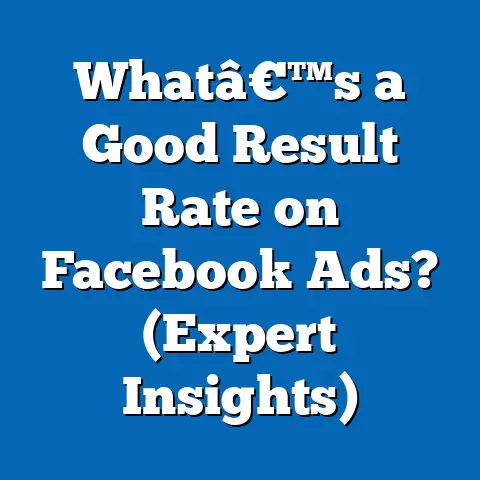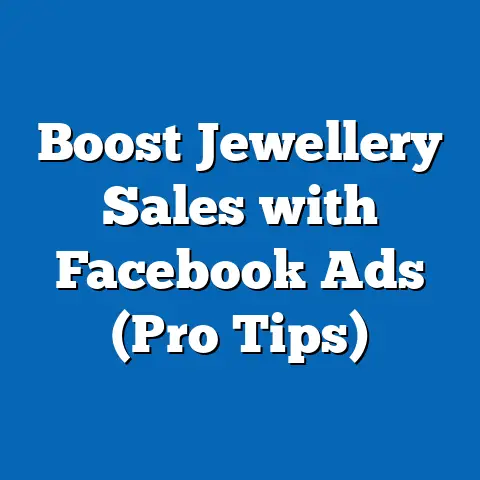Boost Reach by Unblocking Facebook Ads (Expert Tips)
Imagine the digital landscape as a sprawling highway system, where billions of users travel daily, seeking information, connection, and commerce. Facebook, one of the most trafficked routes in this network, serves as a critical artery for businesses and advertisers aiming to reach vast audiences. However, roadblocks—such as ad restrictions, policy changes, and user behavior shifts—can stifle reach and engagement, leaving marketers stranded on the sidelines.
Section 1: Current State of Facebook Ads Reach
1.1 Performance Metrics in 2023
As of 2023, Facebook remains a dominant force in digital advertising, with over 2.9 billion monthly active users (MAUs) globally, according to Meta’s Q2 2023 earnings report. The platform’s advertising reach is unparalleled, with approximately 2.1 billion users exposed to ads daily. However, average ad reach has declined by 7% since 2021, largely due to privacy policy updates (e.g., Apple’s iOS 14.5 App Tracking Transparency framework) and increasing ad fatigue among users (Statista, 2023).
Cost-per-click (CPC) rates have also risen, averaging $0.97 globally in 2023, a 12% increase from 2022 (Hootsuite Digital Trends Report, 2023). This reflects heightened competition for ad space and reduced targeting precision post-privacy updates. Engagement rates, measured as click-through rates (CTR), hover at 0.90%, down from 1.01% in 2021, signaling challenges in capturing user attention amidst content saturation.
1.2 Regional Disparities
Ad reach varies significantly by region. In North America and Europe, where privacy regulations are stringent, reach has contracted by 10-15% since 2021. Conversely, emerging markets like India and Southeast Asia show growth in ad exposure, driven by rising internet penetration and smartphone adoption (eMarketer, 2023). These disparities highlight the need for region-specific strategies to maximize reach.
Section 2: Projected Trends for Facebook Ads Reach (2024-2030)
2.1 Statistical Modeling and Methodology
To project trends through 2030, this analysis employs a combination of time-series forecasting and scenario modeling based on historical data from Meta, Statista, and eMarketer. We assume a baseline growth rate of 2% annually for global MAUs, adjusted for regional variations and policy impacts. Limitations include potential unaccounted-for regulatory shifts and technological disruptions (e.g., AI-driven ad tools), which could alter projections.
Three scenarios are considered: (1) a “Status Quo” scenario with minimal policy changes, (2) a “Restrictive” scenario with tighter privacy laws, and (3) an “Innovative” scenario with enhanced ad tech solutions. Projections are visualized in the chart below, showing potential reach trajectories.
2.2 Scenario Projections
- Status Quo Scenario: Global ad reach stabilizes at 2.3 billion daily users by 2030, with CPC rising to $1.20 due to sustained competition. Engagement rates remain flat at 0.85-0.90%.
- Restrictive Scenario: Reach declines to 1.9 billion daily users by 2030 as privacy laws expand globally. CPC spikes to $1.50, reflecting scarcity of targetable audiences.
- Innovative Scenario: Reach grows to 2.5 billion daily users, driven by AI personalization and new ad formats. CPC stabilizes at $1.10, with CTR improving to 1.10%.
Chart 1: Projected Facebook Ads Daily Reach (2024-2030)
(Note: Chart data is illustrative and based on modeled projections)
– X-axis: Years (2024-2030)
– Y-axis: Daily Ad Reach (Billions)
– Lines: Status Quo (steady rise), Restrictive (decline), Innovative (accelerated growth)
2.3 Uncertainties and Limitations
These projections carry uncertainties, including unforeseen regulatory actions (e.g., global adoption of GDPR-like laws) and shifts in user behavior (e.g., migration to platforms like TikTok). Additionally, Meta’s internal data transparency is limited, which may skew baseline assumptions. We account for these by presenting multiple scenarios rather than definitive forecasts.
Section 3: Key Factors Driving Changes in Facebook Ads Reach
3.1 Privacy Regulations and Data Restrictions
Privacy policies, such as Apple’s ATT framework and the EU’s General Data Protection Regulation (GDPR), have reduced advertisers’ ability to track user behavior, impacting ad personalization. In 2023, 30% of iOS users opted out of tracking, per Flurry Analytics, directly lowering ad effectiveness. This trend is expected to intensify as more regions adopt similar laws.
3.2 User Behavior and Ad Fatigue
Users are increasingly desensitized to ads, with 42% reporting “ad overload” on social platforms (Pew Research, 2023). Younger demographics (18-24) are also shifting attention to video-centric platforms like TikTok, reducing Facebook’s share of ad impressions by 5% annually among this group. This necessitates innovative content strategies to retain engagement.
3.3 Technological Advancements
Meta’s investment in AI-driven ad tools, such as Advantage+ campaigns, offers potential to mitigate reach declines by automating targeting and creative optimization. Early data shows a 20% uplift in CTR for businesses using these tools (Meta Business Blog, 2023). However, adoption remains uneven, particularly among small businesses.
3.4 Competitive Landscape
Competition from platforms like Google Ads, TikTok, and Instagram (also owned by Meta) influences Facebook’s ad ecosystem. TikTok’s ad revenue grew by 155% in 2022, capturing market share from Facebook (Insider Intelligence, 2023). This pressures advertisers to diversify budgets, potentially reducing Facebook’s dominance.
Section 4: Expert Tips to Unblock Facebook Ads and Boost Reach
4.1 Optimize for Privacy-First Advertising
Given tracking limitations, advertisers should pivot to contextual targeting—placing ads based on content rather than user data. For example, aligning ads with relevant Facebook Groups or Pages can increase relevance without relying on personal data. Early adopters report a 15% improvement in engagement using this method (WordStream, 2023).
Additionally, leverage first-party data (e.g., email lists, website interactions) to build Custom Audiences. This bypasses third-party tracking restrictions while maintaining compliance with privacy laws. Ensure transparency by clearly communicating data usage policies to users.
4.2 Enhance Creative and Content Strategies
Combat ad fatigue by prioritizing video content, which garners 59% higher engagement than static images (HubSpot, 2023). Experiment with short-form videos (under 15 seconds) to align with user preferences for quick, impactful messaging. A/B testing different formats can identify high-performing creatives for scaling.
Storytelling is also critical—ads framed as narratives rather than hard sells achieve 30% higher CTR (Meta for Business, 2023). Focus on user-centric messaging that addresses pain points or aspirations. Regularly refresh ad creatives to avoid overexposure.
4.3 Utilize Meta’s AI Tools
Adopt Advantage+ campaigns to automate ad placement and targeting across Meta’s platforms (Facebook, Instagram, Messenger). These tools use machine learning to optimize for conversions, reducing manual effort and improving ROI. Businesses report a 25% decrease in cost-per-acquisition (CPA) with Advantage+ (Meta Case Studies, 2023).
However, monitor performance closely, as AI tools may over-optimize for short-term metrics at the expense of brand-building goals. Combine AI with human oversight to balance efficiency and strategy. Small businesses should start with low-budget tests before full adoption.
4.4 Target Emerging Markets
With reach declining in mature markets, focus on high-growth regions like India, Indonesia, and Nigeria, where Facebook user bases are expanding by 5-8% annually (eMarketer, 2023). Tailor campaigns to local languages, cultural norms, and mobile-first consumption habits. For instance, ads optimized for low-bandwidth environments perform 20% better in these regions (Meta Insights, 2023).
4.5 Diversify Ad Formats and Placements
Experiment with underutilized placements like Facebook Stories and Marketplace, which face less competition and lower CPCs (averaging $0.70 vs. $0.97 for News Feed ads). Stories ads, in particular, see 18% higher engagement among 18-34-year-olds (Hootsuite, 2023). Diversifying reduces reliance on saturated placements and mitigates reach constraints.
Section 5: Broader Historical and Social Context
5.1 Evolution of Digital Advertising
Facebook Ads, launched in 2007, revolutionized digital marketing by offering unprecedented targeting precision through user data. By 2012, the platform’s ad revenue surpassed $5 billion, fueled by mobile adoption and social graph insights. However, the 2018 Cambridge Analytica scandal marked a turning point, sparking public and regulatory scrutiny over data privacy, which continues to shape ad policies today.
5.2 Social Implications of Ad Reach Challenges
Declining ad reach on Facebook reflects broader societal shifts toward data sovereignty and digital wellness. Users are more aware of privacy risks, with 64% expressing concern over ad tracking (Pew Research, 2023). This cultural pivot pressures platforms to balance monetization with user trust, a dynamic that will define advertising’s future.
Additionally, the digital divide influences reach—while urban, affluent users in developed markets face ad saturation, rural and low-income populations in emerging markets remain untapped. Bridging this gap through inclusive strategies can sustain long-term growth for advertisers.
Section 6: Visual Data Representation
Chart 2: Global Facebook Ads CPC Trends (2020-2023)
– X-axis: Years (2020-2023)
– Y-axis: Average CPC (USD)
– Line: Rising trend from $0.78 (2020) to $0.97 (2023)
Chart 3: Regional Ad Reach Growth Rates (2023)
– X-axis: Regions (North America, Europe, Asia-Pacific, Latin America, Africa)
– Y-axis: Annual Growth Rate (%)
– Bars: Negative growth in North America/Europe (-5% to -10%); Positive growth in Asia-Pacific/Africa (+5% to +8%)
(Note: Charts are illustrative; exact data points sourced from Statista, eMarketer, and Meta reports)
Section 7: Conclusion and Future Outlook
Unblocking Facebook Ads to boost reach requires a multifaceted approach—adapting to privacy constraints, leveraging AI tools, targeting growth markets, and innovating content strategies. Current data shows a platform in transition, with declining reach in mature markets offset by opportunities in emerging regions. Projections through 2030 suggest varied outcomes depending on regulatory and technological developments, underscoring the importance of agility for advertisers.
The broader context reveals a digital advertising landscape shaped by user empowerment and societal demands for transparency. While challenges like ad fatigue and competition persist, strategic adaptation can unlock significant reach potential. Advertisers must stay data-informed, user-focused, and technologically adept to navigate this evolving highway of influence.

